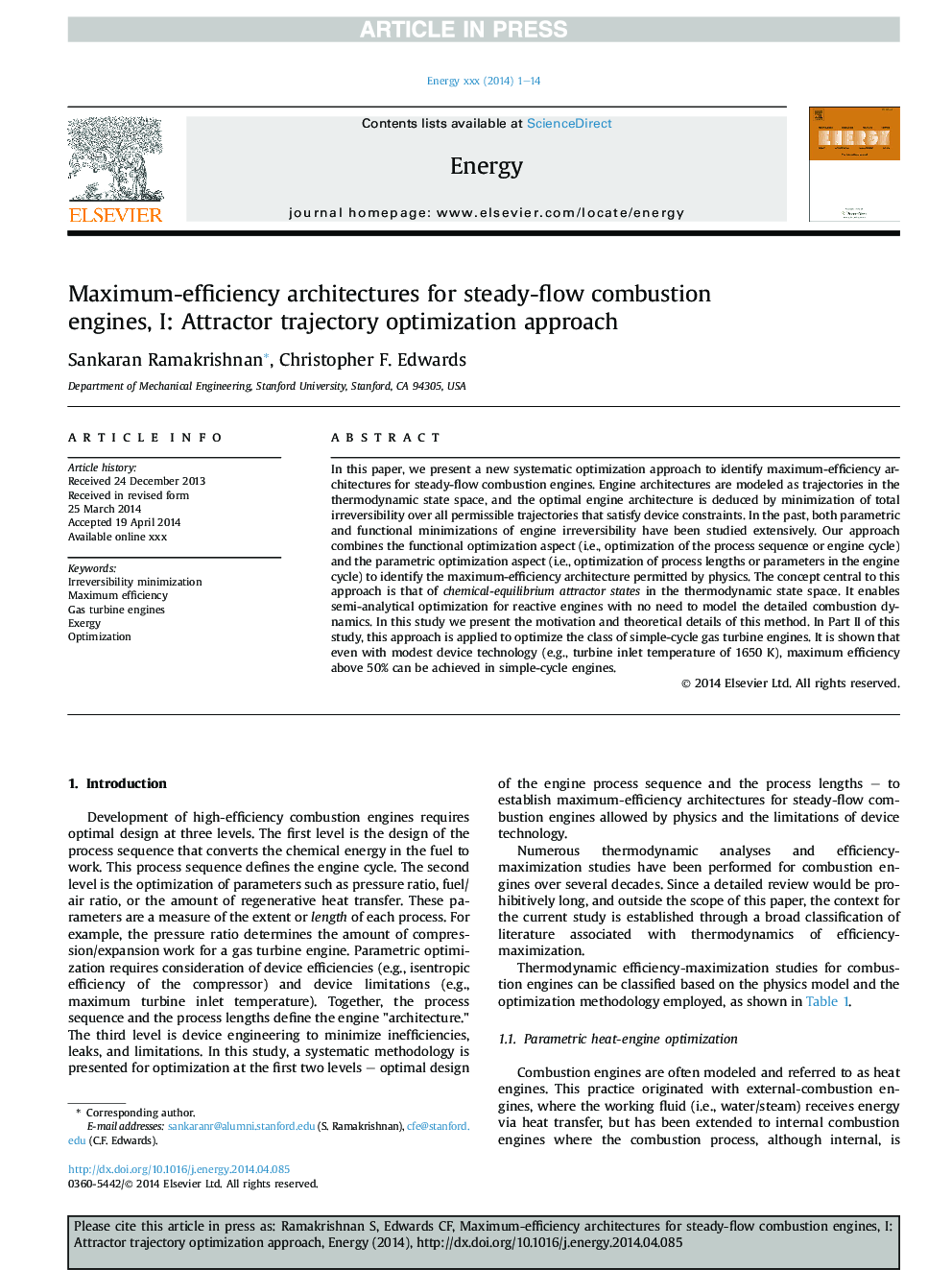| Article ID | Journal | Published Year | Pages | File Type |
|---|---|---|---|---|
| 8077233 | Energy | 2014 | 14 Pages |
Abstract
In this paper, we present a new systematic optimization approach to identify maximum-efficiency architectures for steady-flow combustion engines. Engine architectures are modeled as trajectories in the thermodynamic state space, and the optimal engine architecture is deduced by minimization of total irreversibility over all permissible trajectories that satisfy device constraints. In the past, both parametric and functional minimizations of engine irreversibility have been studied extensively. Our approach combines the functional optimization aspect (i.e., optimization of the process sequence or engine cycle) and the parametric optimization aspect (i.e., optimization of process lengths or parameters in the engine cycle) to identify the maximum-efficiency architecture permitted by physics. The concept central to this approach is that of chemical-equilibrium attractor states in the thermodynamic state space. It enables semi-analytical optimization for reactive engines with no need to model the detailed combustion dynamics. In this study we present the motivation and theoretical details of this method. In Part II of this study, this approach is applied to optimize the class of simple-cycle gas turbine engines. It is shown that even with modest device technology (e.g., turbine inlet temperature of 1650Â K), maximum efficiency above 50% can be achieved in simple-cycle engines.
Related Topics
Physical Sciences and Engineering
Energy
Energy (General)
Authors
Sankaran Ramakrishnan, Christopher F. Edwards,
